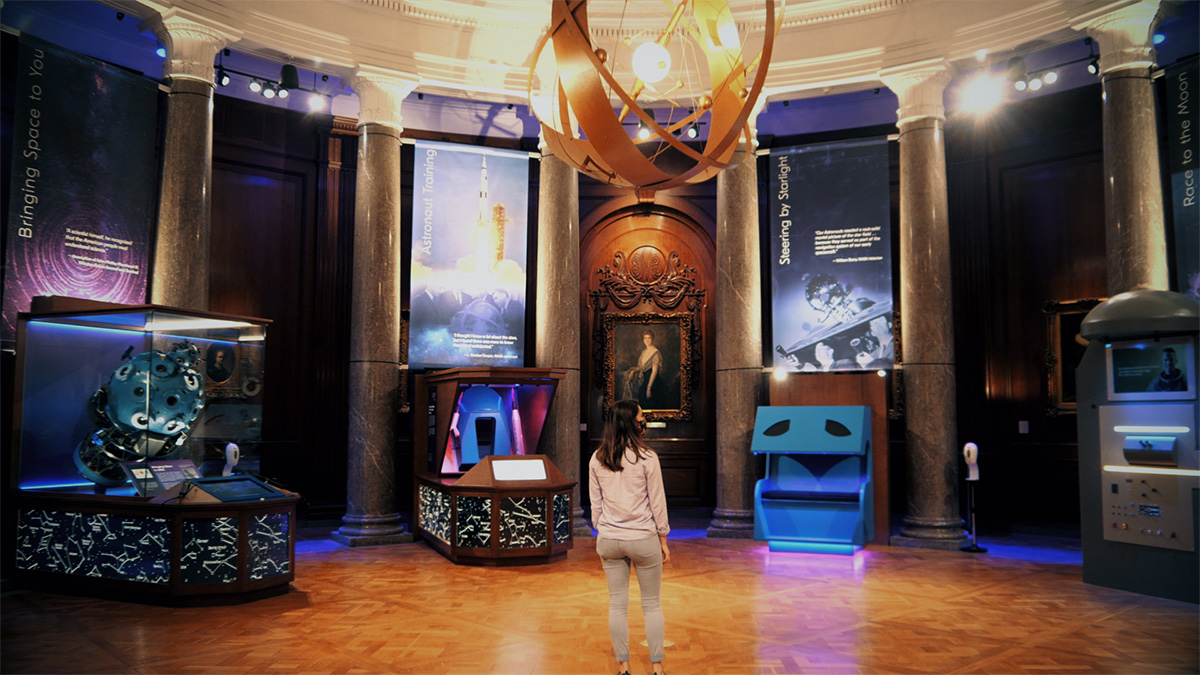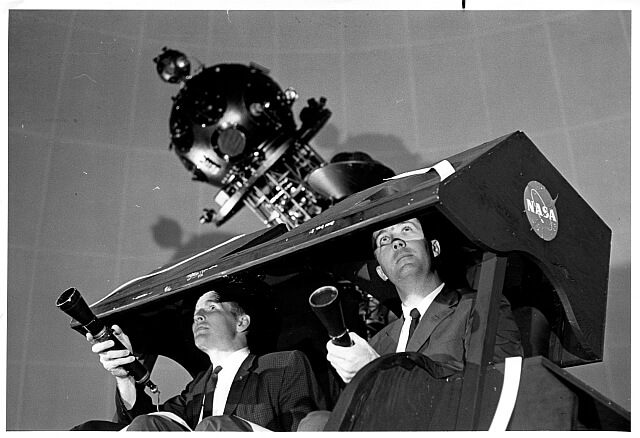Producing films for the dome
A team at the Morehead Planetarium and Science Center creates original films to make science engaging for thousands of viewers each year.
Press the play button above to watch the video
Behind an unassuming door at 140 1/2 East Franklin St. in Chapel Hill, a production team makes Hollywood-style animated films that are viewed by tens of thousands of people each year around the globe, and by North Carolinians every week at the Morehead Planetarium and Science Center. The films aren’t meant to be projected on flat screens but rather massive domes such as the one at Morehead Planetarium.
The planetarium’s newest original show, “Mysteries of Your Brain,” is an animated trip across neurons and through illusions that explores what makes the human brain unique. Viewed on the concave surface of the planetarium, it’s almost as if you’re peering up into your own head. The 24-minute film, currently showing at the planetarium, took a little over one year to go from concept to screen.
Opened in 1949, Morehead Planetarium and Science Center was the South’s first planetarium and only the eighth in the United States at that time. From the beginning, it has stood out for producing original shows for other planetariums. Morehead’s planetarium’s first show, “Let There Be Light” was shown via a Zeiss star projector and seen by millions of visitors.
In 2008, the planetarium made the jump from analog to digital productions, which included building a studio team with visual effects artists, animators and filmmakers to create immersive films, 3D productions and virtual reality experiences. The first digital film produced by this digital and experiential team, “Earth, Moon and Sun,” was a bestselling show for the first two years of its distribution and was translated into multiple languages. For the past 13 years, the planetarium’s production team has led its field in original fulldome planetarium shows. Its work can be seen in theaters in more than 30 states and on four continents.
Fulldome shows need to be interesting for children and adults, while also teaching a scientific concept in an engaging way. Most film ideas start with a grant from a federal agency, like NASA or the National Science Foundation, or a film commission from a private institution or even an individual scientist. After that, the creative and experiential team develops the film’s main idea and goal.
“We have to consider what the show will focus on in relation to the planetarium because what we might think fits a television or a computer screen is very different than what’s going to work displayed on the planetarium dome,” says Digital Production Manager Ben Fox.
The production process isn’t all that different from that of an animated Hollywood animated movie. A writer creates a script to guide the direction of the film, and the team begins by sketching out rough concepts. The illustrators then draw out templates of visual elements such as characters or scenery, and the primary creators use digital production tools and 3D software to render a storyline that plays correctly on the expansive and rounded planetarium dome. Audio engineers work with a composer to create the music and sounds in the film, and voice artists from around the country record dialogue for the characters.
The biggest difference is the concave viewing surface. As they work through the process, team members can watch and test their progress in their “test dome,” a scaled-down version of a planetarium dome that seats only two people at a time but allows them to see how the film looks on an overhead dome.
“It’s rare for a planetarium to actually create their own content because it requires investing in a lot of people and hardware,” says Director of Creative and Experiential Design Jay Heinz. “The benefit is we have full creative control and we can communicate scientific concepts in the best way to reach our audiences.”
The planetarium’s creative and experiential team also creates shows for other planetariums and science centers across the country that want new and original content but don’t have the personnel or technological resources. There are over 350 planetariums in the U.S. and almost 3,000 in the world, and many rely on planetariums like Morehead for their programming.
The planetarium’s original films are shown across the country and on multiple continents, but they’re also enjoyed by those who can’t leave the hospital just down the road in Chapel Hill. Starting in 2020, the creative and experiential team loaded its most popular films onto virtual reality goggles and sent them to UNC Children’s Hospital so the patients can still enjoy the same learning experience as their peers.
“Technology used to be a limitation because of how large the files are to run fulldome films, but now technology has caught up and I’m excited to try to incorporate more virtual reality experiences into our films,” says Fox.
After working to create a new film like “Mysteries of Your Brain,” Heinz says it’s rewarding to sit in the planetarium and see others enjoy their work.
“If you’re making a television show or film for theaters, it’s really rare that you that you get to see it with other people,” says Heinz. “But we can go see our work in this huge planetarium and watch how many children learn from and enjoy our films every year.”




